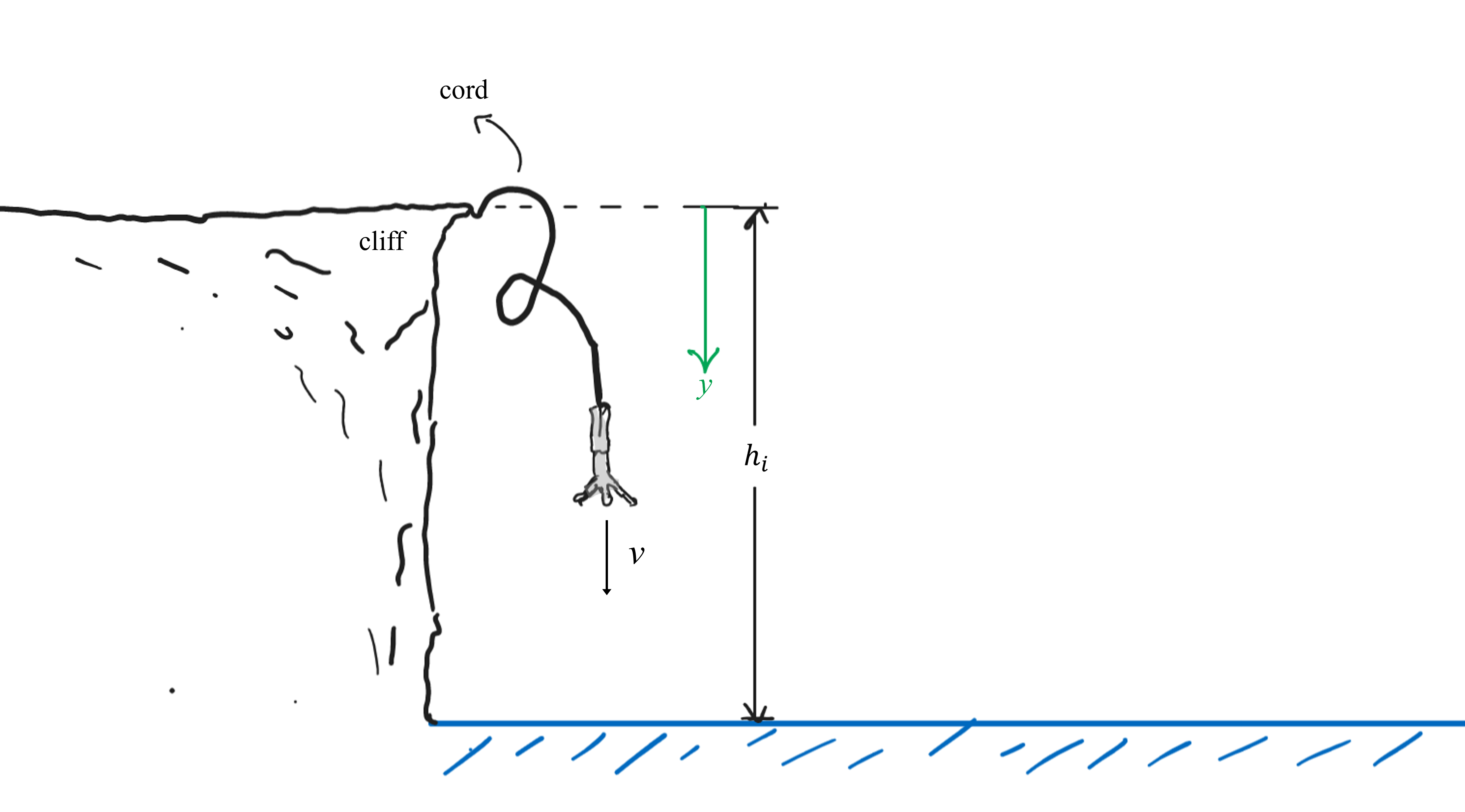Bungee Jumper#
A bungee jumper comprises of a person attached to a rubber cord who then releases himself off a cliff at a high altitude above sea level as shown in the image below.

Part 1#
Treating the rubber cord as the equivalent of a linear spring with original un-stretched length \(L = {{ params.l }} \ \rm{m}\) and spring stiffness constant \(k = {{ params.k }}\ \rm{N/m}\), and neglecting any forces in the cord whilst it is slackened, determine the maximum vertical displacement from the cliff.
Treat the person as a particle with mass \(m\), and neglect the mass of the cord and any resistive forces.
\(m = {{ params.m }} \ \rm{kg}\), \(h_1= {{ params.h1 }}\ \rm{m}\)
Answer Section#
Please enter in a numeric value in \(m\).
Part 2#
If the maximum possible upward acceleration that can safely be applied to a person is \(2g\), what is the maximum value of the spring stiffness constant for this rope of initial length \(L\)?
Answer Section#
Please enter in a numeric value in \(N/m\).
Attribution#
Problem is licensed under the CC-BY-NC-SA 4.0 license.

